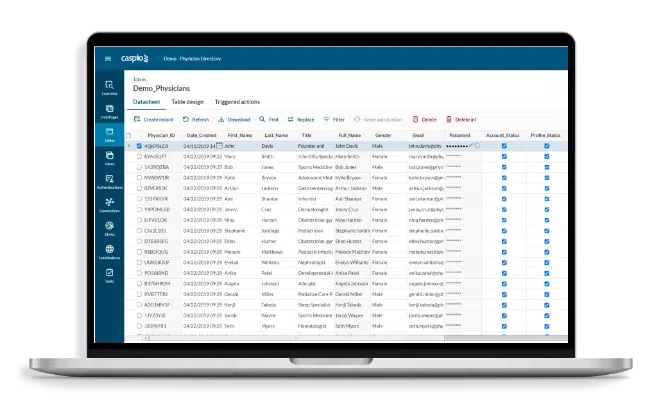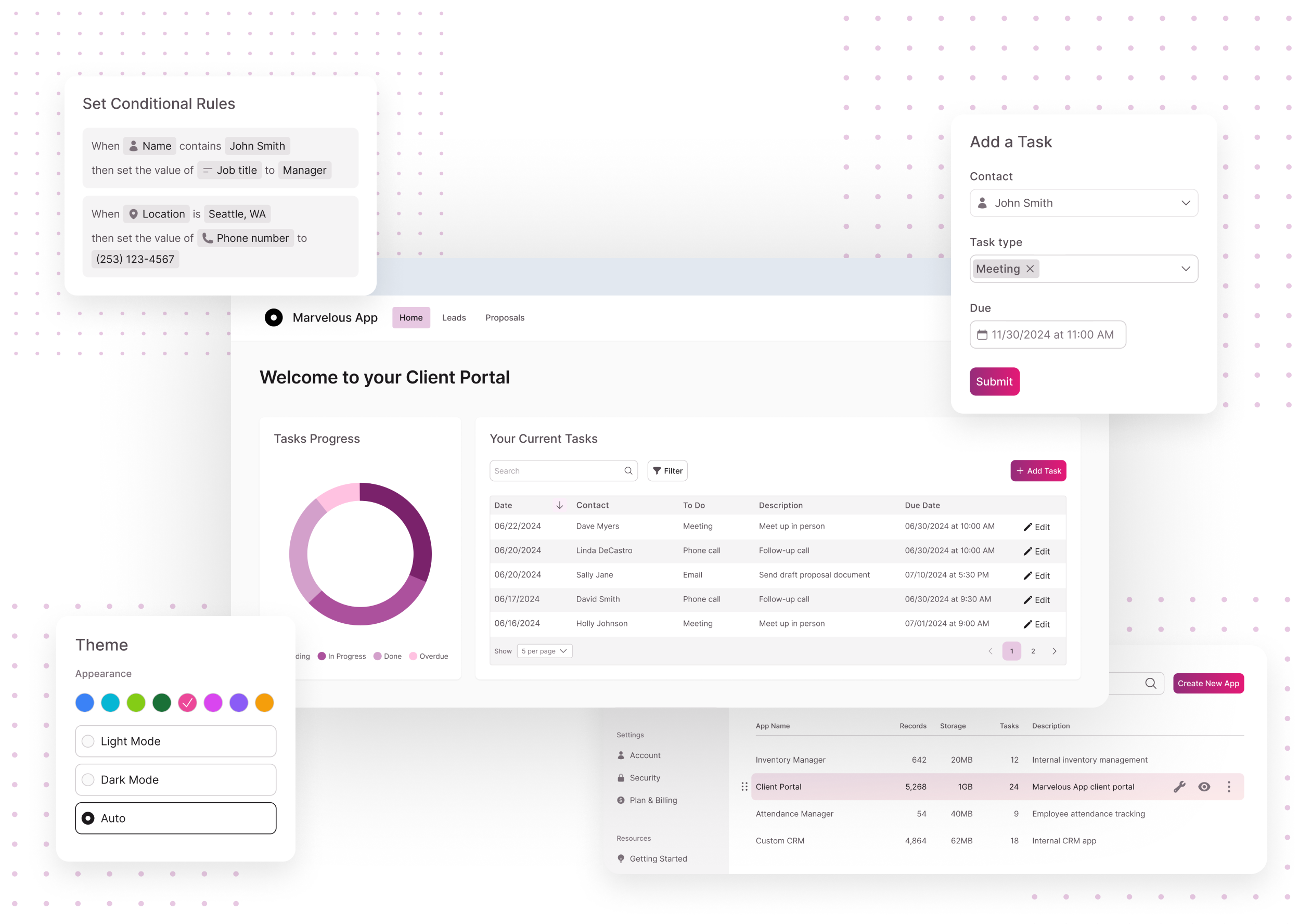No-Code Open System Data Source Production: Streamline Complicated Advancement Tasks
No-Code Open System Data Source Production: Streamline Complicated Advancement Tasks
Blog Article
Discover Just How Scalable Data Sources Can Be Used Without Coding to Enhance Your Organization Workflow
In today's hectic organization atmosphere, the capacity to handle and assess data successfully is vital. Scalable data sources, especially when coupled with no-code services, use a transformative strategy that equips non-technical customers to improve operations. By employing devices that require no coding competence, companies can enhance their functional capacities while minimizing reliance on IT resources. The actual inquiry exists in comprehending just how these solutions can be tailored to specific company requirements and what potential hurdles may occur in their application. Checking out these facets can illuminate the path to functional quality.
Comprehending Scalable Databases
Scalable databases are essential for modern-day business operations, enabling companies to efficiently handle boosting quantities of data without compromising efficiency. These data sources are developed to grow and adapt to the transforming demands of a service, making sure that they can take care of larger datasets and more complicated inquiries as business requirements develop.
Recognizing scalable data sources involves acknowledging their 2 key types: upright scaling and straight scaling. Upright scaling, or "scaling up," includes including even more power (CPU, RAM) to an existing server to improve performance. On the other hand, horizontal scaling, or "scaling out," requires adding extra servers to disperse the load, which commonly leads to higher versatility and fault resistance.
Another vital facet is the architecture of scalable databases, which can be either non-relational or relational. Relational databases, such as MySQL and PostgreSQL, are structured and make use of SQL for questions, while non-relational data sources, like MongoDB and Cassandra, use more versatility with unstructured data.
Eventually, comprehending scalable data sources is essential for organizations intending to take advantage of data as a tactical asset, enabling them to remain competitive in a progressively data-driven atmosphere.

Benefits of No-Code Solutions
Unlocking the capacity of no-code solutions equips businesses to enhance operations and improve efficiency without the requirement for substantial programming understanding. These systems allow non-technical users to create, change, and manage databases effortlessly, therefore democratizing access to innovation across teams.
Among the main advantages of no-code remedies is their rate of implementation. Organizations can rapidly release applications and automate procedures, considerably minimizing the time spent on growth cycles. This agility enables companies to respond quickly to market changes and client demands, promoting a competitive edge.
Furthermore, no-code platforms lower dependence on IT divisions for daily tasks, allowing technological teams to focus on more intricate jobs that need specialized abilities. This shift not just maximizes source allotment yet likewise advertises advancement within the organization.
Cost-effectiveness is one more advantage, as no-code services can decrease advancement and upkeep expenses. By minimizing the requirement for coding knowledge, companies can harness the abilities of their existing workforce without the expenses of employing additional employees.
Popular No-Code Database Devices
The surge of no-code remedies has led to the emergence of different data source devices that deal with services seeking effectiveness and ease of access. These devices encourage individuals with limited technical proficiency to produce, manage, and adjust data sources perfectly.
Caspio attracts attention for its ability to build internet applications without any kind of coding. It enables services to produce robust data sources and release applications rapidly, satisfying various industry requirements. In a similar way, Flair supplies straightforward user interfaces and powerful information monitoring abilities, Check Out Your URL enabling companies to develop custom applications customized to their workflows.

Use Situations in Company Procedures
Exactly how can services take advantage of database tools to enhance their operations? Scalable databases provide companies with effective abilities to manage and analyze information without the demand for substantial coding understanding. These tools can improve various organization procedures, ultimately leading to boosted performance and efficiency.
One prominent usage situation is client relationship administration (CRM) Services can make use of scalable databases to track customer communications, choices, and responses, allowing personalized interaction and much better solution. By streamlining this details, groups can collaborate extra successfully and respond to consumer needs in real-time.
An additional considerable application is inventory administration. Business can use no-code database tools to monitor supply levels, track deliveries, and projection demand. This makes certain ideal inventory degrees, reduces waste, and lessens stockouts.
Additionally, job management can gain from scalable databases by enabling groups to manage jobs, target dates, and resources in an unified system. With real-time updates and information visualization, project managers can make enlightened decisions.
Getting Going With Implementation
Applying scalable databases in service procedures requires an organized method to make certain successful combination and use. The primary step is to carry out an extensive needs assessment, determining details business requirements, data types, and expected development patterns. This fundamental understanding will certainly guide the selection of the suitable data source option.
Following, pick an easy to use, no-code database platform that lines up with your functional objectives. no-code. Numerous contemporary options supply instinctive user interfaces, allowing non-technical users to handle data successfully. After choosing a platform, establish a clear data architecture that describes just how information will certainly be arranged, accessed, and preserved
Training is vital; make certain that staff member are furnished with the required abilities to utilize the database. Consider providing tutorials or workshops to familiarize staff with the system's functionalities.
Conclusion
In conclusion, the assimilation of scalable data sources with no-code remedies presents significant benefits for service operations. These platforms encourage non-technical individuals to effectively manage and examine data, assisting in boosted decision-making and collaboration. By embracing devices such as Airtable and go to website Concept, companies can lower and improve procedures reliance on IT resources. Eventually, leveraging these technologies can cause boosted performance and functional efficiency, placing services for continual my response development in a competitive landscape.
One popular no-code data source device is Airtable, which combines the performance of a spread sheet with the power of a database.How can organizations take advantage of database devices to improve their operations? Organizations can utilize scalable data sources to track consumer interactions, choices, and comments, making it possible for individualized communication and better solution.Carrying out scalable data sources in service operations needs a structured technique to make sure effective combination and utilization.In conclusion, the integration of scalable data sources via no-code solutions provides significant benefits for business procedures.
Report this page